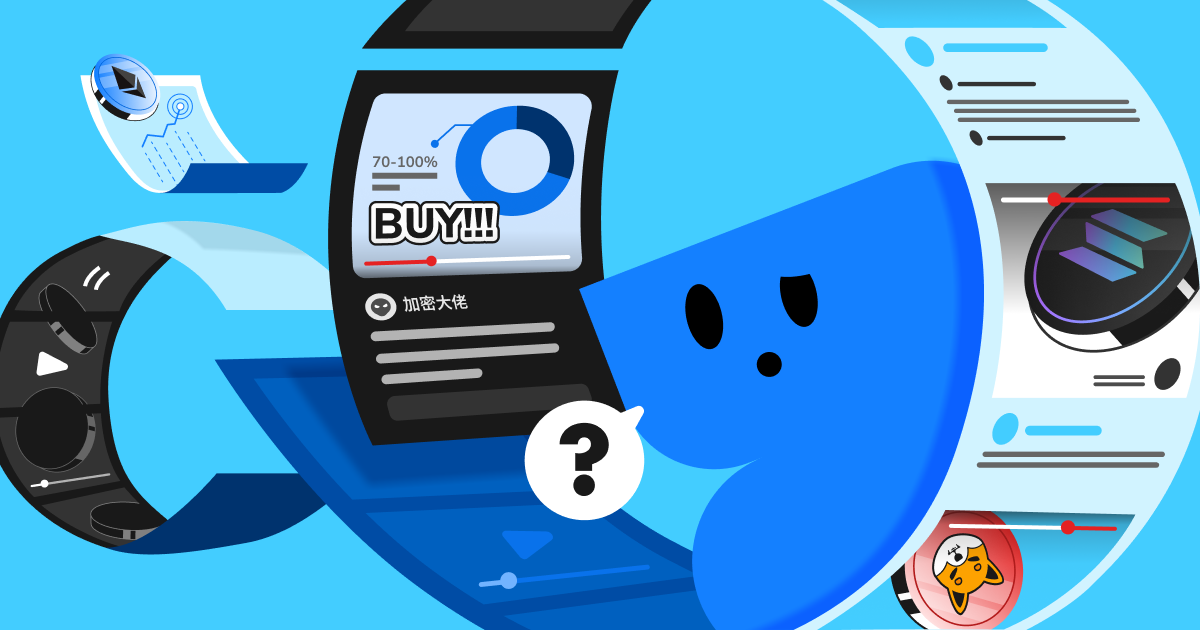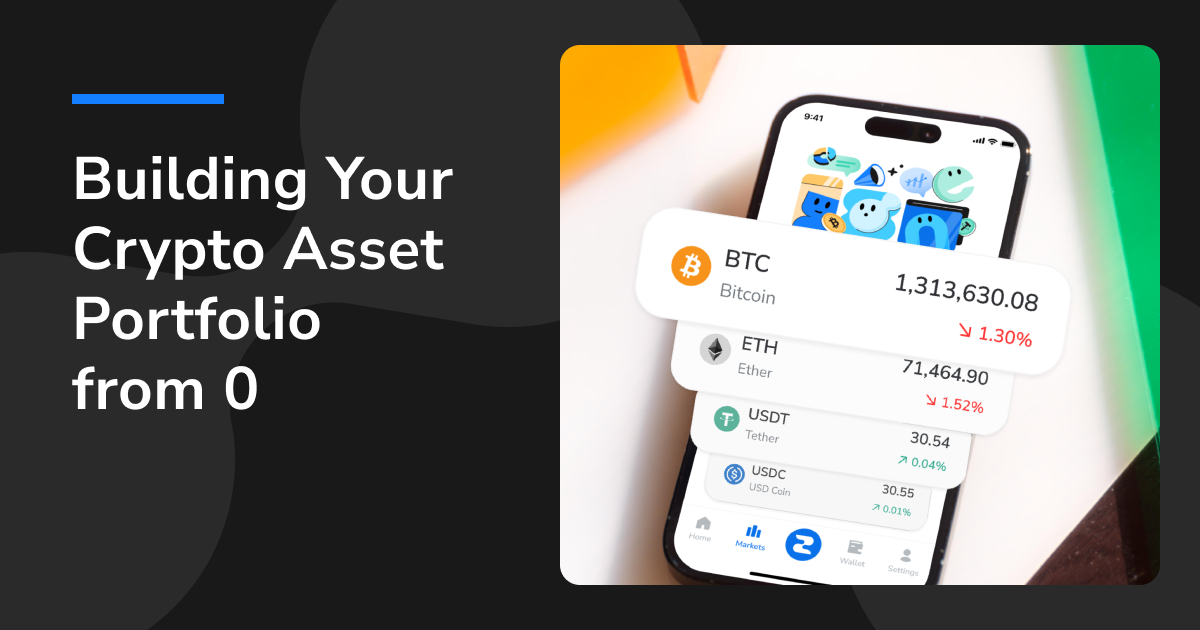Don’t Blindly Follow YouTubers: Learn to Spot Altcoin Scams in 3 Minutes

What Are Altcoins?
The term Altcoin comes from “Alternative Coin,” meaning any cryptocurrency other than Bitcoin (BTC). This includes Ethereum (ETH), Dogecoin (DOGE), Shiba Inu (SHIB), and even obscure new tokens. However, in Taiwan’s crypto community, the word "altcoin" often carries a negative connotation—referring to low-quality, hype-driven, or even scammy coins. These projects often lure retail investors with the promise of "low market cap, high returns," while offering little more than a flashy whitepaper and influencer endorsements.
3 Fundamental Indicators to Evaluate Altcoins
1. Team Background
A trustworthy crypto project should have a fully disclosed team—founders and tech leads with names, bios, and verifiable social accounts (LinkedIn, Twitter).
Investigate:
• Past success in delivering real tech products
• History of involvement in rug pulls or Ponzi-like schemes
• Pattern of frequent rebranding or token relaunches
Tip: Be cautious of anonymous teams, fake AI-generated profile pictures, or vague career claims. In contrast, credible projects like Ethereum, Chainlink, or Solana have transparent, engaged, and tech-proven founders.
2. Whitepaper and Roadmap
A whitepaper is essentially a business plan. It should clearly explain:
• What problem the project solves
• The technology behind it
• The tokenomics (economic model)
• A detailed development roadmap with timelines
Red flags:
• Generic templates with little technical depth
• No clear competitive edge or market focus
• Vague or shifting milestones
Tip: If the whitepaper reads like a sales pitch with buzzwords but lacks technical structure, it’s likely just a polished shell project.
3. Real-World Use Case and Token Utility
Good token design should answer:
• Who will use it? (Are there actual users?)
• Why is this token essential? (Does it offer utility or scarcity?)
• How is the supply managed? (Fair token distribution and vesting?)
Watch out for:
• Tokens used only for speculative trading
• Heavy allocation to insiders or investors
• No lock-up periods—team could dump at any time
Tip: If you can’t explain what the token is actually used for, and are only buying it because a KOL said it’ll go up, it probably has no real value.
3 Technical Indicators to Watch
1. Price Patterns
Don’t just look at price spikes—analyze if they make sense.
Healthy uptrends often feature:
• Stair-step patterns with pullbacks and new highs
• Correlation with real news or industry developments
• Stable movements during normal trading hours
Suspicious activity includes:
• Sudden 10–30% spikes with no volume or context
• “Isolated” pumps after long flat periods
Tip: Use tools like TradingView to view weekly/monthly charts. Daily moves can be misleading.
2. Trading Volume
Volume confirms the strength of price moves.
• Price ↑ + Volume ↑ = strong uptrend
• Price ↑ + Volume ↓ = fake pump, wash trading
• Price ↓ + Volume ↑ = panic selling or exit signals
Tip: Look for volume divergence (e.g., RSI hits a high, but volume drops)—a common sign of reversal.
3. Liquidity Depth
Many altcoins are listed only on small exchanges or DEXs. They may show price gains but have extremely low liquidity.
Check for:
• Listings on reputable exchanges (Binance, Coinbase, OKX)
• Order book depth—do small trades cause big price swings?
• Wide spreads (Bid-Ask > 3–5%) indicate manipulation risk
Tip: Use CoinMarketCap or CoinGecko’s “Markets” tab to check liquidity across exchanges. Avoid coins only listed on one obscure platform.
Breaking Down YouTuber Hype Tactics
1. Exaggerated Profit Claims
Titles like “100x Altcoin Revealed” or “This Is the Next Solana” are common. These videos often:
• Skip fundamentals or chart analysis
• Avoid discussing token supply, risks, or lock-ups
• Don’t disclose holdings or partnerships with the project
Reality check: This mimics the "pump-and-dump" strategy in traditional penny stocks. Influencers buy early, use hype to attract new buyers, then sell into the rally—leaving followers holding the bag.
📌 Red flag: If a video shows nothing but “potential” and “price charts” without logic or risk assessment, it’s probably marketing, not research.
2. Creating FOMO (Fear of Missing Out)
Common phrases like “last chance to get in,” “don’t miss this 10x gem,” or “you’ll regret not buying” are designed to create urgency.
Two main strategies:
1. Urgency – Claims like “airdrop ends in 24 hours” pressure you to act fast.
2. Social proof – Showcasing Telegram hype, Twitter engagement, or growing wallet counts to suggest “everyone’s buying in.”
Result: You panic buy without research and enter near the top—classic emotional trading.
📌 Red flag: If the pitch relies on hype, social stats, and fear of missing out—but lacks real data or analysis—it’s likely just FOMO marketing.
3. The Illusion of “Easy Money”
New investors often get lucky early and confuse luck with skill.
Examples:
• First meme coin makes a quick profit → overconfidence
• Trusting intuition over analysis
• Ignoring red flags like devs disappearing or liquidity drying up
This bias is called Self-Attribution Bias—you credit wins to yourself and blame losses on the market. It often leads to reckless bets and eventual big losses.
📌 Self-check: Do you have an actual strategy, stop-loss rules, and research? If not, your gains may just be luck.
Case Study: A Taiwanese KOL Controversy
"Crypto Hu Shih" and Unlicensed Investment Advice
A well-known Taiwanese crypto YouTuber, “Crypto Hu Shih,” was popular for educational content. However, in 2022 he launched paid membership plans offering coin-specific buy/sell advice—effectively acting as an unlicensed financial advisor.
Taiwan’s FSC and TWSE later issued a formal cease-and-desist, making it the first public warning against KOL-driven crypto investment advice in Taiwan.
📌 Key concerns:
• Offering price targets and entry points under the guise of “education”
• Not disclosing holdings in promoted coins
• Promoting paid memberships linked to those recommendations
📌 Judgment tip: If a channel starts offering “buy now” calls and price targets without proper credentials or transparency, treat it as high risk. Don’t rely solely on it for investment decisions.
ZONE Wallet
ZONE Wallet is a blockchain investment gateway designed for Taiwanese users. It combines full regulatory compliance, cutting-edge security, and TWD transaction support, with a mission of making “every crypto transaction safe and secure.” Start building your crypto portfolio with ease—today.Investing in virtual assets carries risks related to price volatility and liquidity. The above content is for reference only and does not constitute any financial advice. Please carefully assess your financial situation before investing and be cautious of potential fraud.
🚀 Ready to get started? Register with ZONE Wallet today and invest with peace of mind!
[download-app]









